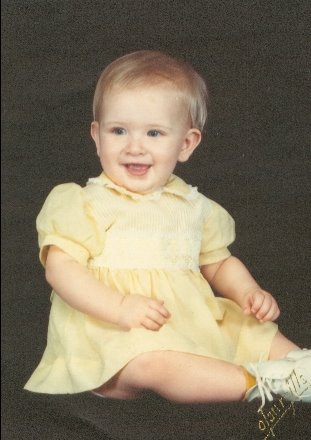Poetry Book Review Two: A Collection of Color
Poetry Book Two: A Collection of Color
Greenfield, Eloise. Illustrated by Jan Spivey Gilchrist. (2003). Honey, I Love. New York: HarperCollins/Amistad. ISBN 0060091231.
Honey, I Love is a little girl’s ode to everything she loves, spanning the endearing characteristics of her cousin to hot summer pass-times, from her uncle’s car to her mama’s soft skin. This book is a journey of the senses experienced through the point of view of a young girl of color.
The language is simple—the words themselves accessible, but woven together so intricately and deliberately that it is impossible not to relate to the girl’s experiences even if we don’t share the same memories. The rhyme scheme and meter are consistent throughout with the exception of every second stanza, at which point the line is essentially repeated and left hanging as the next stanza starts anew. Her use of “Honey, let me tell you” is the one thing that grounds this poem in the perspective of color and it is repeated often adding just enough punctuation to draw out the perfect amount of realistic emotion.
Since the actual text of the book is one long poem, I include it here:
I love
I love a lot of things,
a whole lot of things
Like…
My cousin comes to visit
and you know he’s from the South
‘cause every word he says
just kind of slides out of his mouth
I like the way
he whistles
and I like the way
he walks
But honey, let me tell you that
I LOVE the way he talks
I love the way my cousin talks
and
The day is hot and icky
and the sun sticks to my skin
Mr. Davis turns the hose on,
everybody jumps right in
The water stings my stomach
and I feel so nice and cool
Honey, let me tell you
that I LOVE a flying pool
I love to feel a flying pool
and
Renee comes out to play
and brings her doll without a dress
I make a dress with paper
and that doll sure looks a mess
We laugh so loud and long and hard
the doll falls to the ground
Honey, let me tell you that
I LOVE the laughing sound
I love to make the laughing sound
and
My uncle’s car is crowded
and there’s lots of food to eat
We’re going down the country
where the church folks like to meet
I’m looking out the window
at the cows and trees outside
Honey, let me tell you that
I LOVE to take a ride
I love to take a family ride
and
My mama’s on the sofa
sewing buttons on my coat
I go and sit beside her,
I’m through playing with my boat
I hold her arm and kiss it
‘cause it feels so soft and warm
Honey, let me tell you
I LOVE my mama’s arm
I love to kiss my mama’s arm
and
It’s not so late at night,
but still I’m lying in my bed
I guess I need my rest,
at least that’s what my mama said
She told me not to cry
‘cause she don’t want to hear a peep
Honey, let me tell you
I DON’T love to go to sleep
I do not love to go to sleep
But I love
I love a lot of things,
a whole lot of things
And honey,
I love ME, too.
The illustrations—vibrant, brilliant watercolors—playfully illustrate the poem with a mixture of reality and dreamy fanfare of imagination,
the bright colors and muted textures echo the sing-song qualities of the poem itself.
This book is an impressive piece as it delicately reveals a young African-American perspective of certain symbols held dear while at the same time keeping an uplifting balance of reality and imagination. It would be the perfect book to use to introduce young children not only to poetry but also to the music of life’s many cultures. It could introduce a discussion about each child’s own personal culture as well as the specific symbols and anchors each child sees as important—they could list the things they “love” and be encouraged to write a poem about them. In an older classroom, the book could be used to discuss the African-American culture depicted in the book’s images.
Reviews of Honey, I love (per Amazon.com):
School Library Journal: “Kindergarten-Grade 3-First published in 1978, Greenfield's warm flowing verse will find a welcome new audience in this newly illustrated 25th-anniversary edition…The words beg to be read aloud, as when the narrator's cousin from the South comes to visit, and she says, "I like the way he whistles and I like the way he walks/But honey, let me tell you that I LOVE the way he talks-." Gilchrist's shimmery watercolor illustrations of a beaming African-American child lend a different feel than Diane and Leo Dillon's contemplative charcoal drawings, and may appeal to younger children.”
Booklist: “PreS-Gr. 2. Published originally as a poem in the compilation Honey, I Love, and Other Love Poems (1978), this warm verse gets new life in picture book version enhanced by Gilchrist's down-home illustrations…The poetry has a charming cadence: "I hold her arm and kiss it / 'cause it feels so soft and warm / Honey, let me tell you that / I LOVE my mama's arm / I love to kiss my mama's arm." The picture that illustrates that verse is particularly nice. The watercolor art, which features children who look as if they could be living down the block, will draw readers close.”
The Boston Globe: “Abounds with that special tenderness surrounding the everyday experiences in a child's life. These poems beg to be read aloud.”


0 Comments:
Post a Comment
<< Home